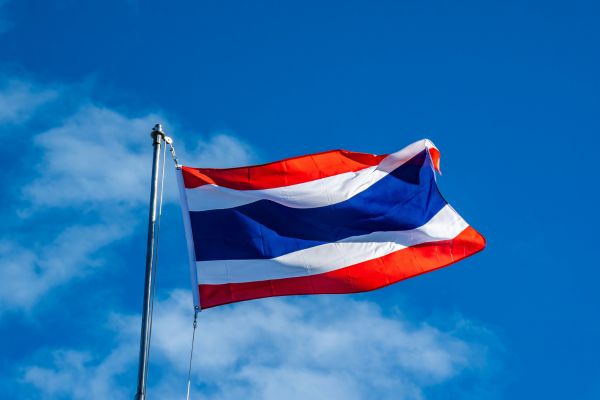
The current forensic examination system has begun to take shape since the reform in 2005. A historical overview allows us to understand how the reform began and where it will lead.
The current forensic examination system in China has been in operation for 15 years since 2005.
Before 2005, forensic examination institutions were established within different organs, including among courts, procuratorates, public security organs, judicial administrative organs, and other competent authorities, where different technical standards were applied respectively. Starting from 2005, China has carried out the reform of forensic examination, i.e., the Ministry of Justice (“the MOJ”)is entitled to uniformly supervise and regulate forensic examination institutions across the country.
I. Initiation of the forensic examination reform
In 2003, the Huang Jing case in Hunan Province of China triggered the forensic examination reform process. To find out the cause of Huang Jing’s death, relevant parties carried out autopsy five times and death verifications six times, yet coming up with different conclusions.
The reason why Huang Jing Case could not be settled smoothly was the poor management of the forensic examination industry, which had not only aroused strong resent of the public, but also triggered the reflection of the judiciary and scholars.
At the end of 2004, the CPC Central Committee issued the Preliminary Opinions of the Leading Group of Central Judicial System Reform on the Judicial System and the Working Mechanism Reform (“the Opinions”, 中央司法体制改革领导小组关于司法体制和工作机制改革的初步意见). The Opinions requires that forensic examination institutions providing services to the public shall be subject to uniform supervision and administration; and that public security organs, national security organs and procuratorates may reserve internal forensic examination institutions as necessary, but only for their internal case investigation, not for the public.
On 28 Feb. 2005, on the basis of the Opinions, China's legislature, the National People's Congress (NPC), promulgated the Decision of the Standing Committee of the NPC on Issues Concerning the Administration of Forensic Examination (“the Decision”, 全国人大常务委员会关于司法鉴定管理问题的决定), which formally established a unified supervision system on forensic examination.
Below are the key points of the Decision:
(1) Forensic examination refers to activities conducted by experts using science and technology or expertise to identify, judge, and provide expert opinions on special issues involved in the lawsuits.
(2) The MOJ shall be in charge of the administration and the registration of experts and forensic examination institutions nationwide. Experts and forensic examination institutions engaged in the following business shall make registration: i. forensic medicine; ii. material evidence; iii. audio and visual materials; iv. other fields agreed upon by the MOJ, the Supreme People's Court(“SPC”) and the Supreme People's Procuratorate.
(3) Investigative organs in charge of criminal cases (such as public security organs and state security organs) may establish forensic examination institutions as necessary, but they shall not provide services to the public.
II. Recent Development of the forensic examination system
In May 2020, the MOJ promulgated the Industry Standard System for the Forensic Examination (“the Standard System”, 司法鉴定行业标准体系), which includes 20 kinds of standards, such as the relevant technical specifications and laboratory management standards for toxins, environmental damage, traffic accident traces, and electronic data, etc. The Standard System aims, through formulating the technical and administrative standards for the forensic examination, to ensure the compliance and reliability of the process and results of the forensic examination. However, the Standard System is simply a part of the standards promulgated by the MOJ, which has been updating new standards in various areas from time to time.
In May 2020, the MOJ promulgated the Guiding Opinions on Further Regulating and Improving the Appearance of Judicial Experts in Court (关于进一步规范和完善司法鉴定人出庭作证活动的指导意见), providing guidance on whether the experts should appear in court and how to explain and accept inquiries of their own expert opinions.
In Mar. 2019, the MOJ promulgated the Measures for the Handling of Complaints in Forensic Examination Practices (司法鉴定执业活动投诉处理办法), which specifies how to complain about experts and forensic examination institutions to the MOJ and its local counterparts.
In August 2018, the MOJ and the State Administration for Market Regulation (“the SAMR”) promulgated the Circular on Regulating and Promoting the Certification and Accreditation of Forensic Examination (关于规范和推进司法鉴定认证认可工作的通知), requiring testing laboratories of forensic examination institutions to conduct qualification certification or accreditation.
In Oct. 2016, the MOJ and the SPC promulgated the Opinions on Establishing the Integrated Mechanism for the Administration and Application of Forensic Examination (关于建立司法鉴定管理与使用衔接机制的意见), aiming to clarify how courts may entrust forensic examination institutions subordinate to the MOJ in litigation, how experts may perform their obligations of appearing in court as an expert witness, and how to regulate the improper practices of judicial experts.
In Mar. 2016, the MOJ promulgated the General Rules on Procedures for Forensic Examination (司法鉴定程序通则), which determines the procedures for forensic examination, i.e. the methods, steps and relevant rules for forensic examination institutions and judicial experts to carry out forensic examination.
In Apr. 2014, the MOJ promulgated the Standards for the Internal Management of Forensic Examination Institutions (司法鉴定机构内部管理规范), clarifying the process of establishing an internal management system by forensic examination institutions.
In Feb. 2014, the MOJ promulgated the Opinions on Further Giving Play to the Role of the Forensic Examination System to Prevent Unjust, False and Erroneous Cases (关于进一步发挥司法鉴定制度作用防止冤假错案的意见), clarifying that it will further promote the role of forensic examination in ensuring judicial justice and preventing unjust, false and erroneous cases.
In Sept. 2012, the MOJ and the Certification and Accreditation Administration promulgated the Standards for the Assessment of Qualification Accreditation of Forensic Examination Institutions (“the Standards”, 司法鉴定机构资质认定评审准则), requiring forensic examination institutions to establish and maintain a management system that meets the requirements of the Standards.
In Apr. 2010, the MOJ issued the Administrative Measures for the Directory of Judicial Experts and Forensic Examination Institutions (司法鉴定人和司法鉴定机构名册管理办法), specifying that the MOJ will compile the Directory of National Judicial Experts and Forensic Examination, only under which can the experts and forensic examination institutions provide services.
In Apr. 2010, the MOJ promulgated the Administrative Measures for the Forensic Examination Licenses and the Practice Licenses of Judicial Experts(司法鉴定许可证和司法鉴定人执业证管理办法), specifying that the MOJ and its local counterparts shall be responsible for issuing the Forensic Examination Licenses to the forensic examination institutions completing the formalities of the examination and registration and the Practice Licenses of Judicial Experts to the experts.
In Dec. 2009, the MOJ promulgated the Code of Professional Ethics for Forensic Examination (司法鉴定职业道德基本规范), clarifying the professional ethics for forensic examination.
In Nov. 2009, the MOJ promulgated the Administrative Measures for the Charges of Forensic Examination (司法鉴定收费管理办法), which specifies that the charges of forensic examination will be subject to the regulation of local governments so as to ensure that the public can bear such charges.
In Sept. 2005, the MOJ promulgated the Administrative Measures for the Registration of Forensic Examination Institutions (司法鉴定机构登记管理办法). The key points of the Measures are as follows: (1) the forensic examination institutions refer to the legal persons or other organizations that are engaged in the specific forensic examination business; (2) the forensic examination institutions are the practicing institutions of the judicial experts; (3) the forensic examination institutions shall practice only after having been approved and registered by the local bureaus of justice and obtaining a license; and (4) the MOJ and the local bureaus of justice are the supervision and administration authorities for forensic examination, and the Association of Forensic Science is only a self-regulatory organization for the forensic examination industry.
In Sept. 2005, the MOJ promulgated the Measures for the Administration and the Registration of Judicial Experts (司法鉴定人登记管理办法). The key points of the Measures are as follows: (1) judicial experts refer to persons who apply scientific technology or specialized knowledge to identify and determine the specialized issues involved in a lawsuit and giving expert opinions; (2) judicial experts shall not practice until he/she has been approved and registered by the local bureau of justice and obtained a practice license; and (3) judicial experts shall practice in a forensic examination institution.
III. Our comment
In China, judges rely heavily on expert opinions issued by judicial experts, in the sense that forensic examination is crucial to fact-finding in a lawsuit. Therefore, the forensic examination system is one of the significant factors to realize judicial justice in China.
This is why the reform of forensic examination is always an important aspect of China's judicial reform. The MOJ, the courts, and procuratorates have also been endeavoring to improve such mechanism. We will continue to focus on further development in this area.
Contributors: Guodong Du 杜国栋









